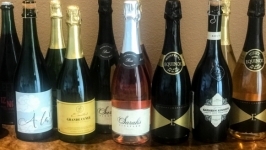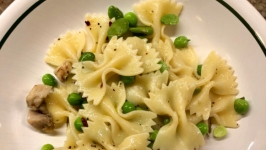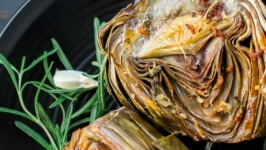Martinelli’s Sparkles : Apple Elixirs Continue to Be the Toast of the Town
A lot of headlines are written about the newest and flashiest companies and ideas, but sometimes the best ideas are the simplest and the oldest. Take, for example, the recipe for apple juice at S. Martinelli and Company, more commonly known as Martinelli’s:
It’s 100% U.S.–grown apples pressed and bottled. There aren’t even any preservatives; the juice is pasteurized in the bottle itself. That’s it. That’s the recipe, and it’s been pretty much the same since the company started over 150 years ago. And it all started with sparkling, fizzy hard cider.
It was in the 1860s that Swiss immigrant Stephen Martinelli started the business that is today known worldwide. He experimented with sodas at first, but in 1868, in a lean-to against the barn on his brother Louis’s Watsonville apple farm, Martinelli’s hard cider was born. It was a highly carbonated, champagne-style hard cider. That was the main focus of the business for around 50 years. Business was good until Prohibition, which could have been the end of the road for the family business.
With a pivot to sparkling nonalcoholic cider and apple juice, and inventive new bottling, the company kept on going. The green champagne-style bottle was introduced in the 1920s and was a stroke of marketing genius, as Hollywood film sets would use Martinelli’s sparkling cider in place of champagne. Nonalcoholic sparkling cider became their new front-running product.
Martinelli’s has been an anchor in the Pajaro Valley and Watsonville since the city was incorporated. The Pajaro Valley used to be filled with apple orchards thanks to a climate where the apples can stay on the tree longer. Today, there is quicker money to be made with strawberries and other crops. Much of the country’s apple crop is now grown in the Pacific Northwest, but with Martinelli’s still based in Watsonville, they provide a market for remaining local apple farmers.
“We’re proud that we haven’t moved,” says John Martinelli, current CEO and fourth-generation Martinelli. “At times, it might have been sensible to sell out and move.” But the community and history hold more value and importance than simply making money.
The dedication to honoring the company’s rich history is right there on the label itself. The gold medal dates back to 1890, when the carbonated hard cider was awarded the Gold Medal at the California State Fair—the first of some 50 gold medals they’ve received.
![]()
![]()
![]() .
. ![]() .
. ![]()
The hard cider was brought back in 1933, then ceased again in 1978 because the sparkling cider was doing so well. But when you’re turning 150, you party like it’s 1868! So they paired up with Silicon Valley–based Gordon Biersch Brewing Company and released a special edition of the original hard cider. Its recipe is as straightforward as the first: fermented apples. The 1868 Hard Cider is like a grown-up version of the classic sparkling cider that you know and love. It’s easy drinking, not too tart and not too sweet, and it’s award-winning, many times over. The cider was originally going to be just a single 11,000-case run, but it sold so well that they’ve kept it around, and sell it only in select locations in Northern California.
The company now offers over 40 different products ranging from mulling spices to sparkling juice blends and new flavor combinations. Apple-cranberry became the first sparkling juice blend in 1991, and that was the only apple-blend option until 2005, when wild berry, raspberry, cherry, mango, peach and pear came on the scene. With the success of adding natural juice to their sparkling line, they continued to branch out with new seasonal flavors and combos like Prickly Passion Lemonade.
The “rosé all day” craze and an increase in quality of sparkling and rosé wines made it a logical next step for Martinelli’s to create their own family-friendly version with the Sparkling Blush, launched in spring 2019 in a clear bottle to show off its beautiful rose color. It starts with the classic carbonated apple juice, this time with a splash of raspberry juice to give it its pink color and taste.
Quality is key to Martinelli’s mission. The CEO himself, along with company associates, taste every batch to ensure it meets their quality standards. “It’s our family name,” says John.
Along with their remarkable 150-year-plus history, here are some other impressive company numbers: 10,000 gallons of juice can be produced in less than two hours; 25 apples go into the making of one 128-ounce bottle of apple juice. And the most mind-boggling: At the height of the fall harvest season, up to one million apples are pressed every day—all traced back to one man’s work to create an elixir of fruit and bubbles in a lean-to against his brother’s barn. A sparkling success!







